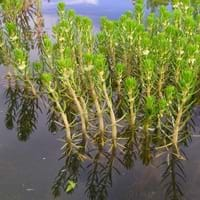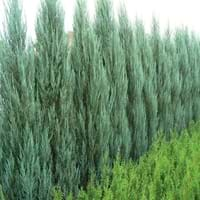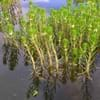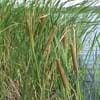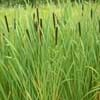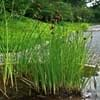Life Span
Perennial
Perennial
Type
Aquatics
Needled or Scaled Evergreen
Origin
Australia, New Zealand
Hybrid origin, North America
Types
Not available
Not Available
Habitat
Lakes, Ponds, stream banks
Cold Regions, Dry areas, Dry Forest
USDA Hardiness Zone
8-12
3-7
Sunset Zone
21,22
1a, 1b, 2a, 2b, 3a, 3b, 5, 6, 7, 8, 9, 10, 11, 12, 13, 14, 15, 16, 17, 18, 19, 20, 21, 22, 23, 24
Habit
Upright/Erect
Pyramidal
Minimum Width
Not Available
Flower Color
Dark Red, Ivory
Non Flowering Plant
Flower Color Modifier
Bicolor
Bicolor
Fruit Color
Yellow Brown
Blue
Leaf Color in Spring
Green, Light Green
Green
Leaf Color in Summer
Green
Green
Leaf Color in Fall
Green
Green
Leaf Color in Winter
Green
Green
Leaf Shape
Pinnate
Acicular
Plant Season
Spring, Summer, Fall
Spring, Summer, Fall
Sunlight
Full Sun, Partial Sun
Full Sun
Type of Soil
Clay, Loam, Sand
Clay, Loam, Sand
The pH of Soil
Acidic, Neutral
Acidic, Neutral, Alkaline
Soil Drainage
Poorly Drained
Well drained
Bloom Time
Late Spring, Early Summer, Summer
Spring
Tolerances
waterlogging
Drought
Where to Plant?
In Water
Ground
How to Plant?
Cuttings, Divison, Seedlings
stem tip cuttings, Tip cutting
Plant Maintenance
Medium
Medium
Watering Requirements
Plant grows in water
Average Water Needs, Do not water frequently
In Summer
Lots of watering
Lots of watering
In Spring
Moderate
Moderate
In Winter
Average Water
Average Water
Soil pH
Acidic, Neutral
Acidic, Neutral, Alkaline
Soil Type
Clay, Loam, Sand
Clay, Loam, Sand
Soil Drainage Capacity
Poorly Drained
Well drained
Sun Exposure
Full Sun, Partial Sun
Full Sun
Pruning
Prune regularly, Remove damaged leaves, Remove dead branches, Remove dead leaves
Remove damaged leaves, Remove dead branches, Remove dead leaves
Fertilizers
iron-rich fertilizer
All-Purpose Liquid Fertilizer
Pests and Diseases
Sap-Sucking Insects, Stem rot
Red blotch
Plant Tolerance
waterlogging
Drought
Flowers
Insignificant
Insignificant
Flower Petal Number
Not Available
Single
Fragrant Bark/Stem
No
Yes
Foliage Texture
Fine
Medium
Foliage Sheen
Matte
Not Available
Attracts
Not Available
Aphids, Early/Late Blight
Allergy
Not Available
Not Available
Aesthetic Uses
Water gardening
Not Used For Aesthetic Purpose
Beauty Benefits
Not Available
Not Available
Environmental Uses
Air purification
Air purification
Medicinal Uses
Not Available
Cold, Cough, Laxative
Part of Plant Used
Not Available
Shoots, Stem
Other Uses
Not Available
Not Available
Used As Indoor Plant
No
No
Used As Outdoor Plant
Yes
Yes
Garden Design
Bog Garden, Container, Groundcover, Tropical, Water Gardens
Foundation, Hedges, Mixed Border, Rock Garden, Wall, Screening, Wind Break
Botanical Name
MYRIOPHYLLUM propinquum
JUNIPERUS scopulorum 'Cologreen'
Common Name
Parrot's Feather, Watermilfoil
Rocky Mountain juniper
In Hindi
watermilfoil
Juniperus scopulorum
In German
watermilfoil
Juniperus scopulorum
In French
myriophylle
Juniperus scopulorum
In Spanish
watermilfoil
Juniperus scopulorum
In Greek
watermilfoil
Juniperus scopulorum
In Portuguese
watermilfoil
Juniperus scopulorum
In Polish
watermilfoil
Juniperus scopulorum
In Latin
watermilfoil
Juniperus scopulorum
Phylum
Magnoliophyta
Tracheophyta
Class
Magnoliopsida
Pinopsida
Order
Saxifragales
Pinales
Family
Haloragaceae
Cupressaceae
Genus
Myriophyllum
Juniperus
Clade
Angiosperms, Core eudicots, Eudicots
Not Available
Tribe
Not Available
Not Available
Subfamily
Not Available
Not Available
Difference Between Watermilfoil and Juniperus scopulorum
If you are confused whether Watermilfoil or Juniperus scopulorum are same, here are some features about those plants to help you choose better. Many people think that these two plants have the same characteristics, but one can see Watermilfoil and Juniperus scopulorum Information and learn more about it. Fertilizers required for proper growth of Watermilfoil are iron-rich fertilizer, whereas for Juniperus scopulorum fertilizers required are All-Purpose Liquid Fertilizer. Hence, one should know the basic difference between Watermilfoil and Juniperus scopulorum if you are planning to have them in your garden to enhance its beauty.
<
Flowering PlantsImportance of Watermilfoil and Juniperus scopulorum
Want to have the most appropriate plant for your garden? You might want to know the importance of Watermilfoil and Juniperus scopulorum. Basically, these two plants vary in many aspects. Compare Watermilfoil and Juniperus scopulorum as they differ in many characteristics such as their life, care, benefits, facts, etc. Every gardener must at least have the slightest clue about the plants he wants to plant in his garden. Compare their benefits, which differ in many ways like facts and uses. The medicinal use of Watermilfoil is Not Available whereas of Juniperus scopulorum is Cold, Cough and Laxative. Watermilfoil has beauty benefits as follows: Not Available while Juniperus scopulorum has beauty benefits as follows: Not Available.
Compare Facts of Watermilfoil vs Juniperus scopulorum
How to choose the best garden plant for your garden depending upon its facts? Here garden plant comparison will help you to solve this query. Compare the facts of Watermilfoil vs Juniperus scopulorum and know which one to choose. As garden plants have benefits and other uses, allergy is also a major drawback of plants for some people. Allergic reactions of Watermilfoil are Not Available whereas of Juniperus scopulorum have Not Available respectively. Having a fruit bearing plant in your garden can be a plus point of your garden. Watermilfoil has no showy fruits and Juniperus scopulorum has no showy fruits. Also Watermilfoil is not flowering and Juniperus scopulorum is not flowering . You can compare Watermilfoil and Juniperus scopulorum facts and facts of other plants too.
